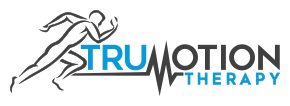Headaches
April 10th, 2020
There are several different types of headaches ranging from common and benign to rare and serious. Fortunately, the majority of headaches, although possibly debilitating, are not caused by anything serious. The two most common types of headaches we treat in our office are cervicogenic headaches and migraine headaches.
Cervicogenic Headaches
Fifteen to twenty percent of all headaches arise from problems in the neck and are classified as ‚Äúcervicogenic headaches‚ÄĚ. Oddly enough, the neck might be entirely pain free but can still be causing pain in the head.¬† The most common trigger for cervicogenic headache is limited movement of the joints in your upper cervical spine. Normally, each of the joints in your neck move freely and independently. Sometimes, restrictions in the upper cervical spine initiate a painful cycle of stiffness, muscle tightness and joint inflammation. This may cause irritation to the sensitive nerves leading from your neck into the back of your head.
Here are some signs that your headache might be coming from your neck:
- Symptoms are usually on one side of the head (occasionally both sides)
- Pain usually radiates from the base of the skull over the eyes
- Pain is continuous but fluctuating and is often described as ‚Äúdeep‚ÄĚ
- It gets worse with sustained postures (sitting at your desk)
- You may also notice chronic neck tenderness and stiffness
Painkillers like ibuprofen can help take the edge off, but they don’t address the actual cause of the headache.  Additionally, even short term use of ibuprofen has been shown to be harmful to your intestinal tract and can increase your risk of heart attack.
Migraine Headaches
A “migraine” is an intense throbbing headache that may be accompanied by nausea, vomiting, and sensitivity to light or noise. Adult women are three times more likely than men to experience migraines. The frequency of migraine headaches usually peaks between age 30 and 40, and attacks decrease thereafter. The onset of a new migraine headache after age 50 is rare.
Migraine headaches are caused by a combination of nerve irritation and enlargement of the blood vessels in your brain. Migraines are set off by ‚Äútriggers‚ÄĚ and the headache occurs when the number of triggers reaches a critical threshold. Known triggers include: neck tightness, stress, smoking, strong odors (i.e. perfumes), bright or flickering lights, too little or much sleep, head trauma, weather changes, motion sickness, lack of activity or exercise, overexertion, fatigue, eyestrain, dehydration, hunger, fasting, and hormonal changes. Certain medications, including hormones or oral contraceptives are known triggers.
About 20-33% of people who get migraines have warning symptoms, called an ‚Äúaura‚ÄĚ, before their actual headache attack. Aura symptoms develop slowly over five to 20 minutes and can last up to an hour. The most common aura is a band of absent vision with an irregular shimmering border. Some patients report numbness or tingling in their arms or face.
We may talk to you about supplements like Vitamin D3 (2000 IU/ day), Riboflavin (400mg/ day), Magnesium (400-600mg/ day), and Co-enzyme Q10 (100mg 3x per day) that have been helpful in preventing headaches for some migraine sufferers. The American Headache Society recommends that patients avoid overuse of medication to control their headaches, (no more than 2 doses per day, 2 days/ week) as this can lead to more frequent ‚Äúrebound‚ÄĚ headaches. Do not begin or discontinue any new vitamins or medications without talking to your doctor first, especially if you are nursing or pregnant.
Our Approach to Treating Headaches
Many people in our local Charlotte community have found headache relief through chiropractic, manual therapy, and corrective exercise here at TruMotion Therapy. Since each person is unique, an individual approach is taken with each patient. Listed below is our general approach at providing headache relief.
- Address the joints of the neck. Research has found chiropractic adjustments can help restore motion of tight joints in the neck and reduce the intensity of headache symptoms.
- Loosen the muscles around the neck. We use techniques like massage, cupping, dry needling and laser therapy to reduce muscle tension.
- Corrective exercise and stretches help restore balance and alignment in the body to help ease pain and prevent it from recurring.
- Consider headache triggers like sleep quality, poor hydration, stress, poor posture, diet, and jaw clenching.
If you live in or around the Charlotte area and are experiencing headaches that don’t seem to get better, click here to work with our team and begin finding relief.





